13 Surreal Landscapes Every Arizonan Needs to See At Least Once In Their Lifetime
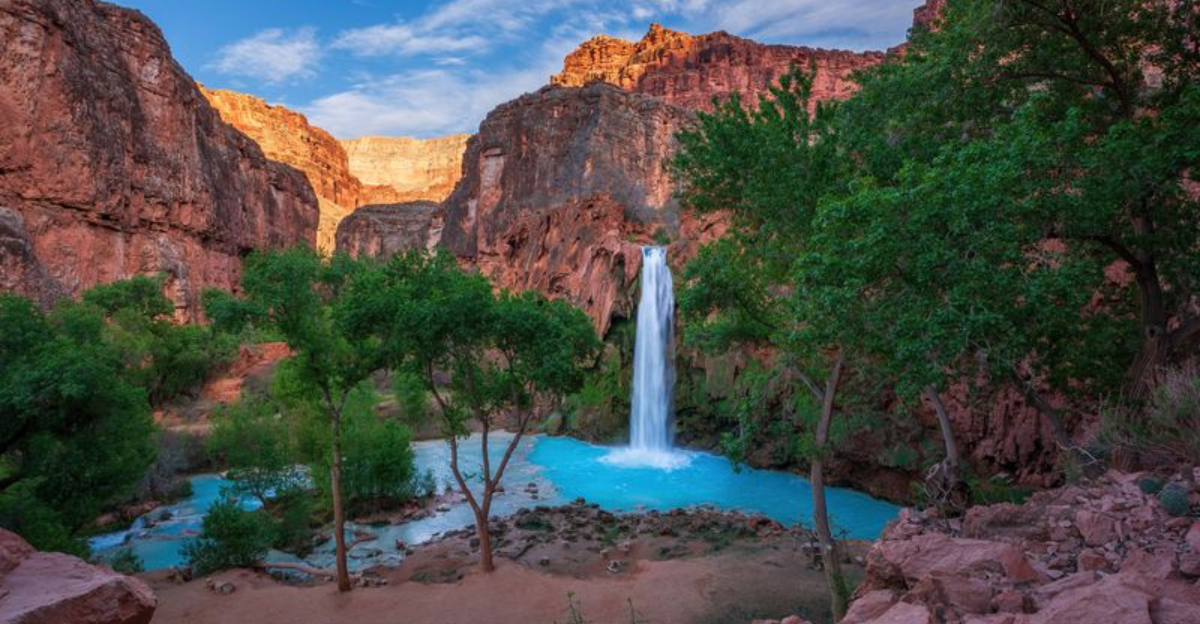
Think you’ve seen all Arizona has to offer? Think again. From alien-like rock formations to secret canyons that look straight out of a dream, the Grand Canyon State is hiding landscapes that even lifelong locals miss.
These spots aren’t just pretty, they’re surreal. We’re talking next-level scenery that’ll make your Instagram jealous and your sense of wonder do a double take.
So pack a snack, gas up the car, and get ready to fall in love with Arizona all over again, one unbelievable view at a time.
1. Grand Canyon’s North Rim

Standing at the edge feels like floating between worlds. The North Rim offers a completely different experience than its more famous southern counterpart, with lush forests and meadows leading to dramatic viewpoints.
Summer wildflowers paint the landscape while deer and wild turkeys wander nearby. The visitor crowd is a fraction of what you’ll find at the South Rim, giving you space to absorb the canyon’s immensity in relative solitude.
Ever noticed how the canyon changes colors throughout the day? Morning light brings out pinks and purples, while sunset transforms the walls into fiery orange.
2. Antelope Canyon’s Light Beams
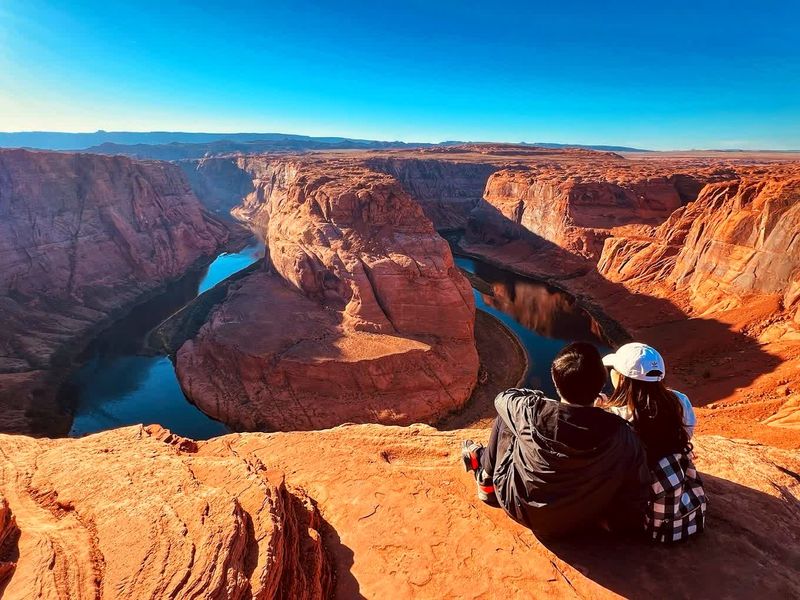
Sunbeams pierce through narrow openings above, creating light shafts that dance across wave-like sandstone walls. The Navajo name for Upper Antelope Canyon is ‘Tsé bighánílíní’ meaning ‘the place where water runs through rocks.’
Walking through feels like entering a secret world. The canyon’s famous light beams appear only at certain times, when sunlight angles perfectly through the slot canyon’s openings.
Local Navajo guides share stories of the canyon’s formation and significance as you navigate its twisting passages. What would it be like to witness a flash flood carving these curves over thousands of years?
3. Horseshoe Bend’s Emerald Waters
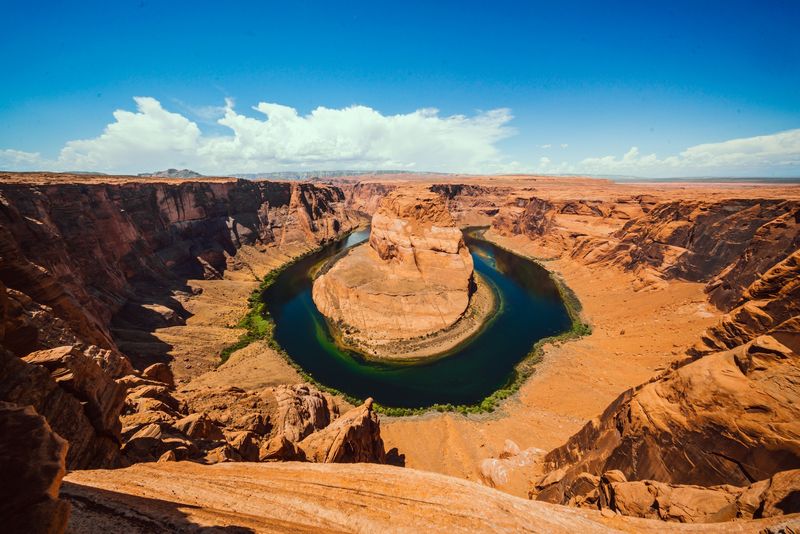
Ever seen a river do a U-turn so dramatic it looks like the Earth folded in on itself? The Colorado River makes an impossible 270-degree turn, carving a perfect horseshoe into burnt-orange cliffs.
From the overlook, you’ll stand 1,000 feet above this geological marvel with nothing but air between you and the emerald waters below. The short hike to the viewpoint crosses sandy terrain that hints at the area’s desert nature.
Bring water and sun protection, there’s no shade along the trail. Photographers flock here at sunset when the low light creates dramatic shadows across the canyon walls. The contrast between the deep blue-green river and the surrounding red rock creates a scene that seems artificially enhanced.
4. Monument Valley’s Iconic Buttes
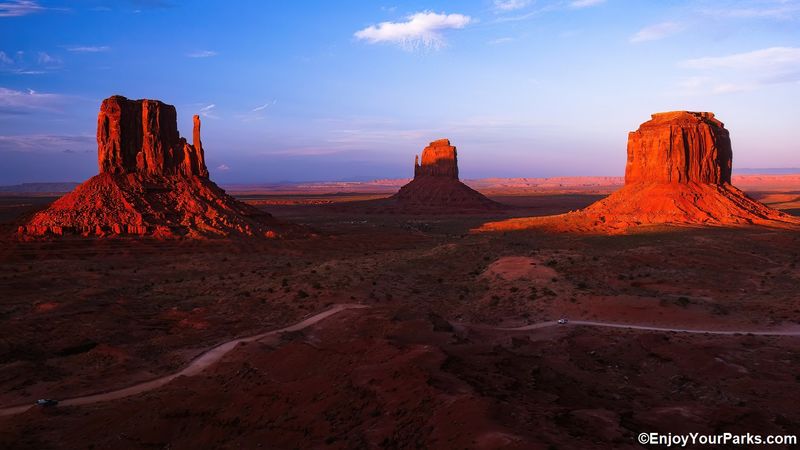
Morning fog lifts slowly, revealing massive sandstone formations rising from the desert floor like ancient skyscrapers. You’ve seen these iconic buttes in countless Western films, but nothing prepares you for their scale and presence.
The 17-mile scenic drive takes you through the heart of this Navajo Nation treasure. Each viewpoint offers a different perspective of the mittens, mesas, and spires that have become symbols of the American Southwest.
Spending the night at The View Hotel lets you witness both sunset and sunrise transforming the landscape. Have you ever watched stars appear above these monuments while coyotes call in the distance?
5. Painted Desert’s Rainbow Hills
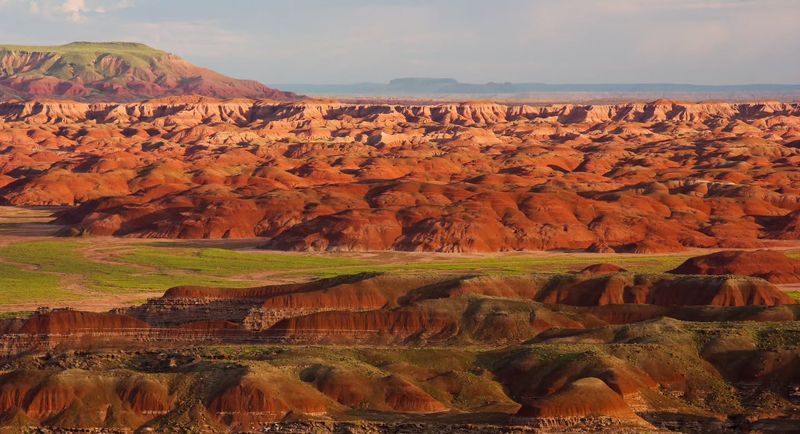
Talk about a rockin’ view, layers of mineral-rich stone paint the horizon in wild streaks of purple, blue, red, and orange. It’s like Mother Nature spilled her art supplies and just went with it.
This isn’t just dirt; it’s a full-blown canvas! Morning and evening light turn the whole place into a color-shifting masterpiece. Spanning over 93,500 acres, the Painted Desert is basically a mood ring made of rock.
Too many folks zoom through on the way to Petrified Forest National Park and totally miss the hues. Do yourself a favor, stop at Kachina Point and let the colors sediment in. When’s the last time the ground beneath your feet gave you a light show?
6. Havasu Falls’ Turquoise Waters
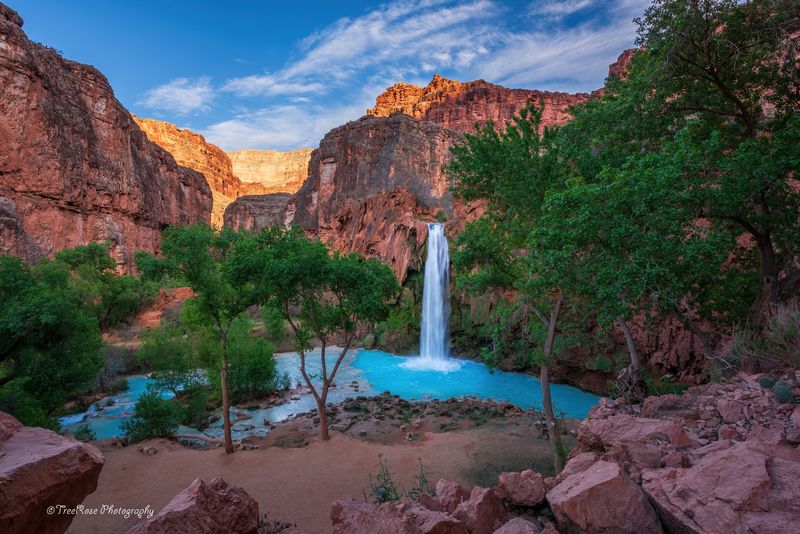
Turquoise water crashes 100 feet down red rock walls into swimming pools that seem impossible in the desert. The striking blue-green color comes from high concentrations of calcium carbonate and magnesium in the water.
The journey is part of the magic. You’ll hike 10 miles through Havasu Canyon on Havasupai tribal lands to reach this desert oasis, making the arrival even sweeter.
Swimming beneath the falls feels like discovering a secret paradise. The contrast between harsh canyon walls and tropical-looking pools creates a surreal experience that’s worth every step of the challenging trek. Remember to secure permits well in advance, they typically sell out within hours of release.
7. Vermilion Cliffs’ Wave Formation
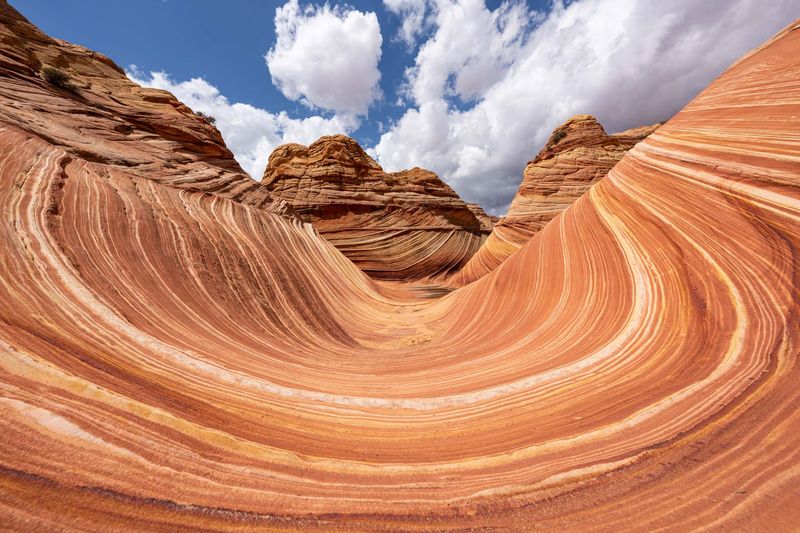
Imagine a rock formation that looks like a wave paused mid-surf, no water, just sandstone swirling like a desert daydream. The Wave was sculpted by wind and water over 190 million years, and today it’s one of the most photographed spots in the Southwest.
But here’s the catch, getting in is harder than scoring front-row concert tickets. Only 64 people per day are allowed, and that’s if you win a permit lottery that’s tougher than guessing a Wi-Fi password in the wilderness.
The hike? No trail, no signs… Just you, a map, and your inner GPS. But once you’re there, wow. And don’t stop at The Wave! The surrounding Vermilion Cliffs are packed with other jaw-droppers like White Pocket and Coyote Buttes.
Still think Mars is out of reach? This might be closer than you think.
8. Chiricahua National Monument’s Balanced Rocks
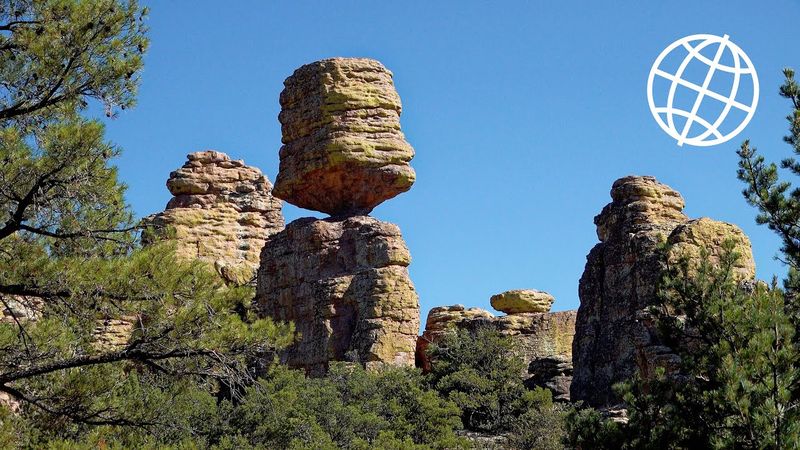
Massive stone pillars stand in impossible formations, balanced precariously atop one another like a giant’s game of Jenga. Known as the “Wonderland of Rocks,” this hidden gem in southeastern Arizona features volcanic formations created by a massive eruption 27 million years ago.
Hiking through the Heart of Rocks loop reveals formations with names like “Duck on a Rock” and “Thor’s Hammer.” The 8-mile scenic drive offers accessible viewpoints for those who prefer not to hike.
Apache leader Cochise once used these rock formations as a natural fortress. Standing among these stone sentinels, you’ll understand why the Chiricahua Apache considered this place sacred. Have you ever seen rocks that seem to defy gravity?
9. Meteor Crater’s Ancient Impact Site
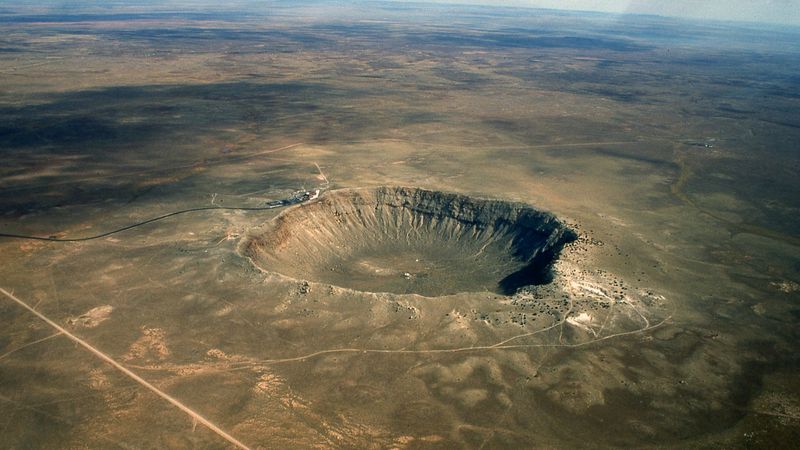
A massive bowl-shaped depression stretches nearly a mile across the desert floor, a silent monument to a violent cosmic collision. Around 50,000 years ago, a meteor traveling at 26,000 miles per hour slammed into Earth, leaving behind the best-preserved impact crater on the planet.
Walking the rim trail, I couldn’t help but feel tiny; the sheer scale is overwhelming. The blast was so intense it vaporized the meteor and launched over 175 million tons of rock into the sky.
Standing on the observation deck, where NASA astronauts once trained for the moon, I found myself staring into that perfect circle of rock, feeling like I was looking into Earth’s memory. It’s one thing to read about space impacts, it’s another to stand in one.
10. Saguaro National Park’s Cactus Forest
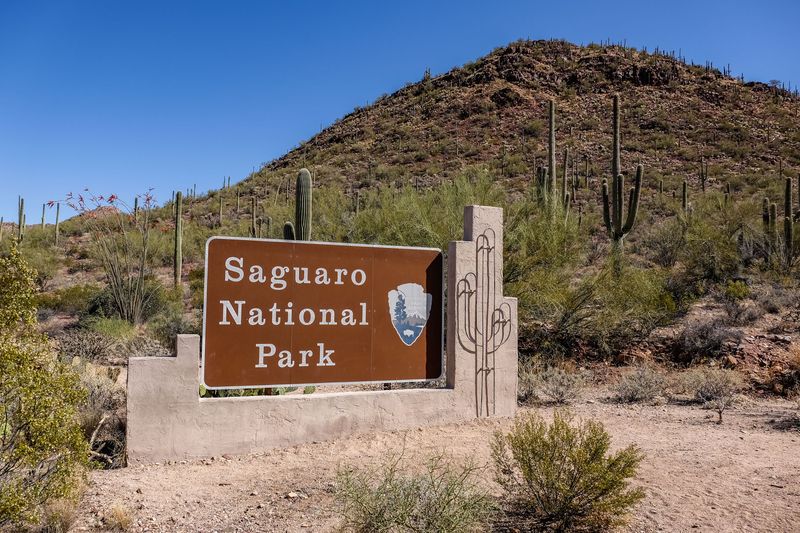
With arms raised like they’re asking for a group hug, thousands of saguaros stand tall in a cactus crowd like no other. These green giants are exclusive to the Sonoran Desert, talk about being a succulent celebrity! Some grow over 40 feet tall and can live longer than your great-great-grandpa (200 years, give or take). The park’s split in two, east and west of Tucson, so you get double the desert drama.
Ever seen a sunset turn cacti into spiky silhouettes? Pure desert magic. And spring? It’s a full-on bloom zoom. Saguaro flowers pull an all-nighter, opening after dark and shutting by noon, just in time for bats and bugs to crash the party.
Fun fact: it can take up to 75 years for a saguaro to grow its first arm! Patience is a desert virtue.
11. White Pocket’s Alien Terrain
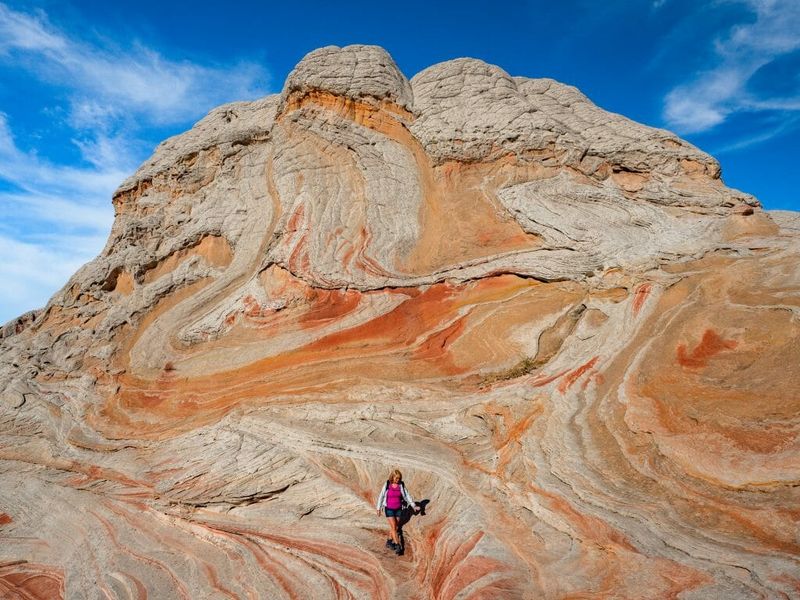
Swirls of white, orange, and red rock twist into brain-like patterns across this remote landscape. Unlike its famous neighbor The Wave, White Pocket requires no permit, just a high-clearance 4WD vehicle and the willingness to navigate unmarked sandy roads.
Photographers consider this area a hidden treasure. The twisted, contorted rock formations create endless compositions as light plays across their textured surfaces throughout the day.
Exploring feels like walking through a dream landscape. Pockets of white sandstone bubble up between waves of red rock, creating a terrain that seems more at home on Mars than Earth. The journey to reach this remote spot keeps crowds minimal, allowing you to experience its otherworldly beauty in relative solitude.
12. Canyon de Chelly’s Ancient Cliff Dwellings
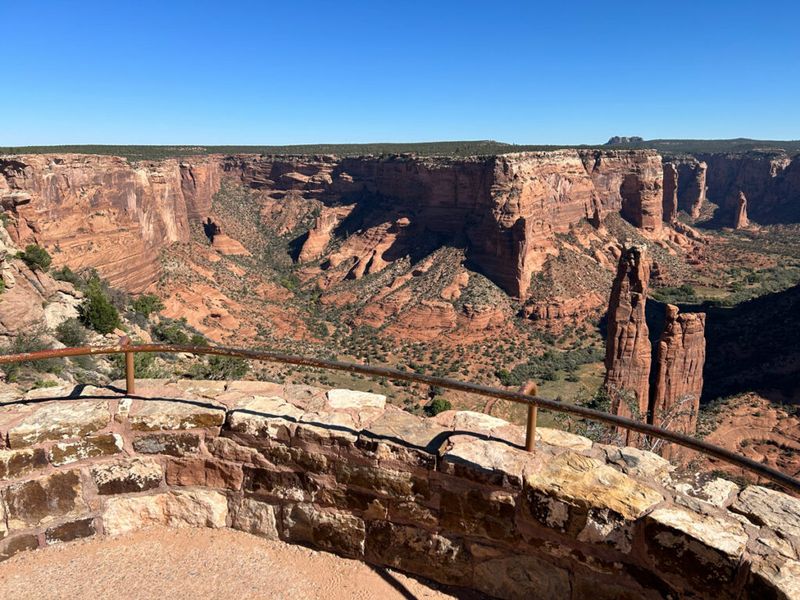
High above a green canyon floor, stone dwellings cling to crimson cliffs like secrets carved into the rock. Down below, Navajo families still farm the land, their traditions rooted as deeply as the cottonwoods lining the streams.
Then there’s Spider Rock, an 800-foot spire shooting straight from the canyon floor like nature’s monument. According to Navajo legend, Spider Woman lives at its peak, the original weaver who passed her art to the people.
Canyon de Chelly isn’t your typical national monument, it’s entirely Navajo land, where history isn’t just preserved, it’s lived. Except for the White House Trail, every path must be walked with a Navajo guide, whose stories add soul to every step.
Standing beneath thousand-year-old cliff homes, you don’t just see history, you feel it echo through the stone.
13. Petrified Forest’s Ancient Wood
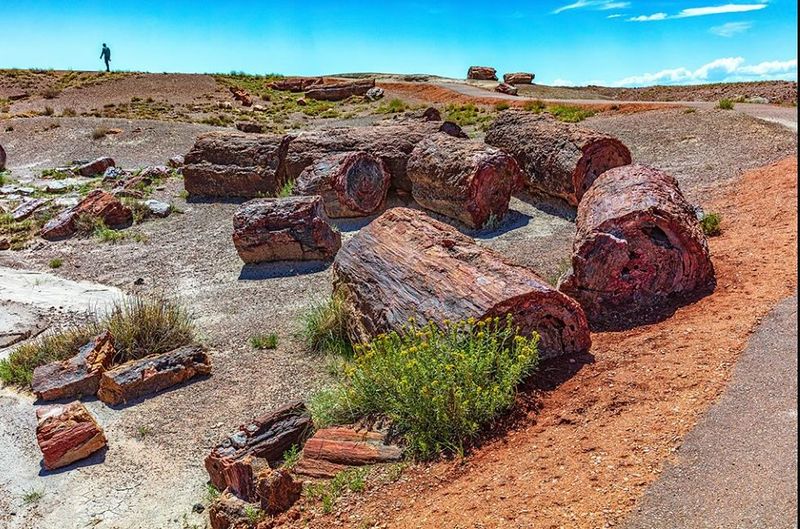
Fallen trees from a prehistoric forest lie scattered across the desert, transformed into rainbow-colored stone. These 225-million-year-old logs were once part of a lush forest during the Late Triassic period when dinosaurs roamed Arizona.
Minerals replaced the organic material over millennia, creating logs with spectacular colors. Crystal Forest trail takes you past some of the most colorful specimens, where quartz, iron, and manganese create purples, blues, and reds in the petrified wood.
The Blue Mesa area offers an otherworldly landscape of blue-gray badlands dotted with petrified logs. Standing beside these stone trees connects you to a world that existed long before humans. Can you imagine the sounds of that prehistoric forest when these trees were alive?
